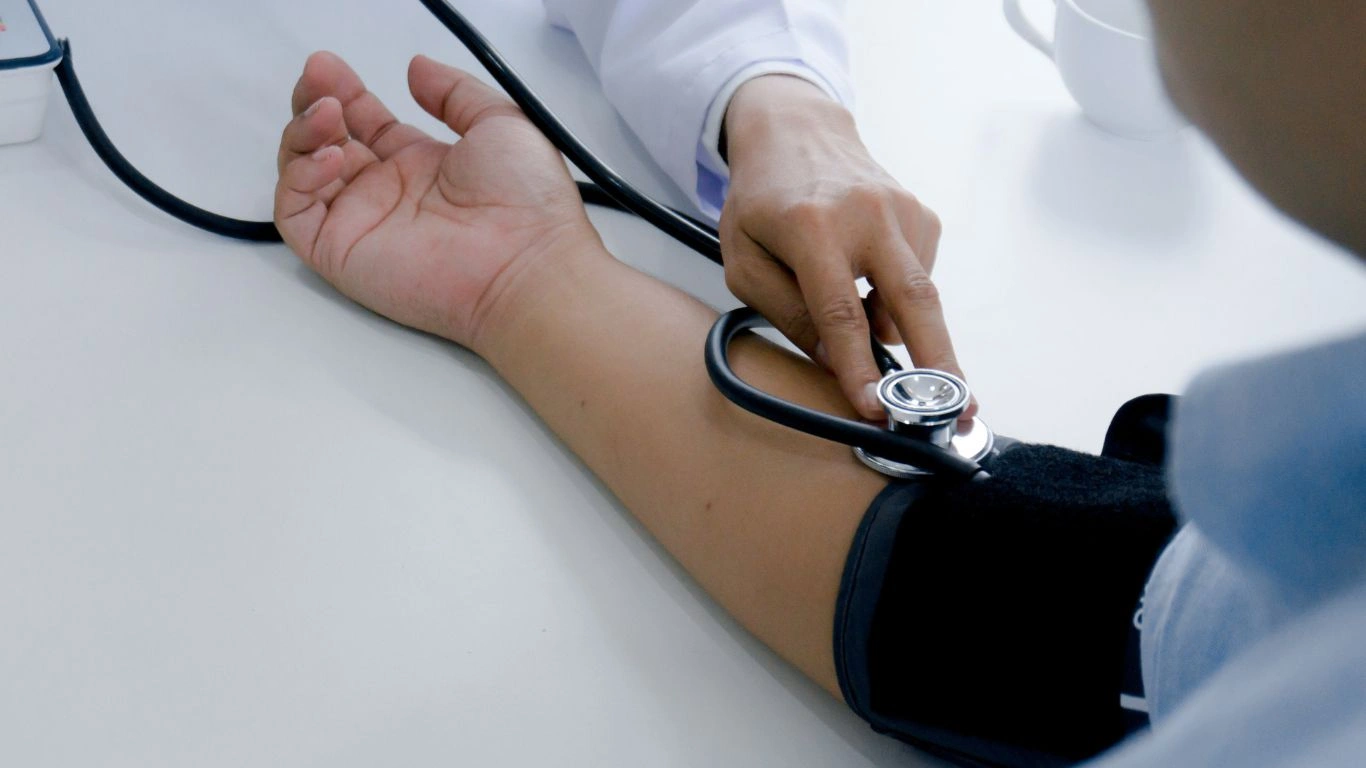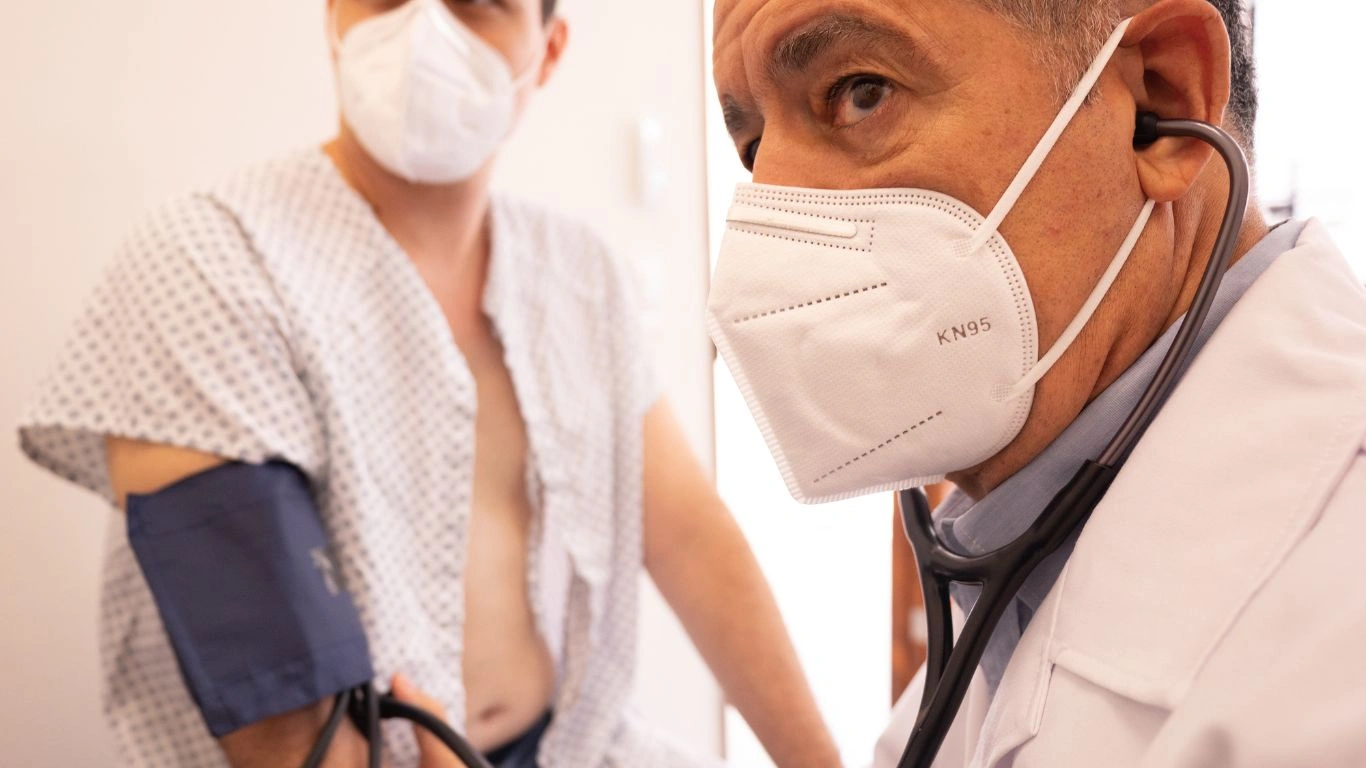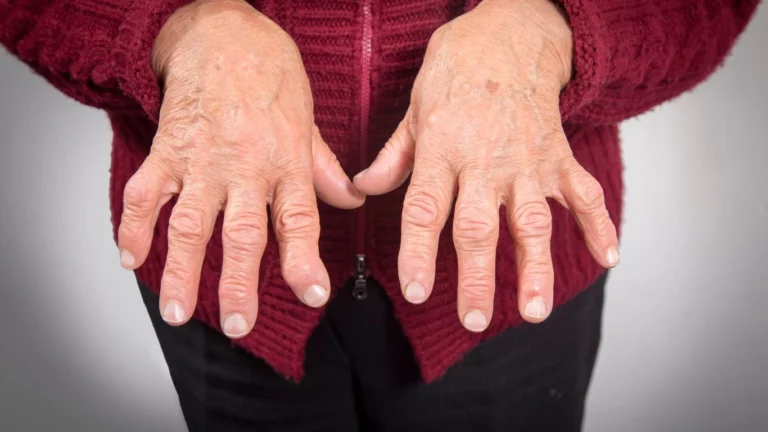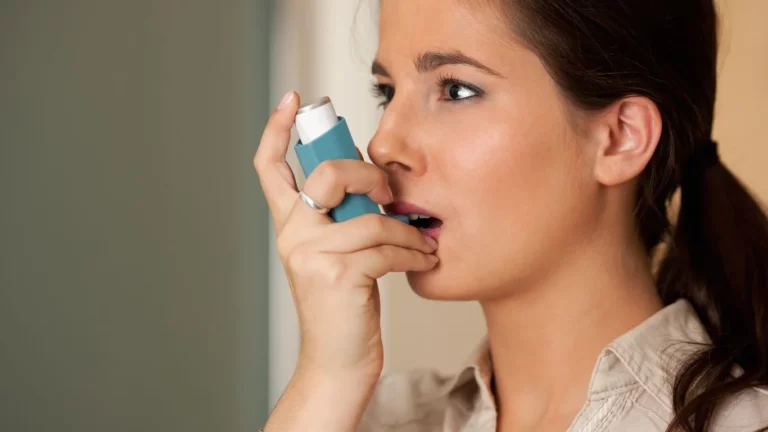How High Blood Pressure and Shortness of Breath Are Connected
As an Internal Medicine Physician with years of experience in managing hypertension, I often encounter patients who are struggling with more than just high blood pressure. One of the most concerning symptoms they report is shortness of breath. It’s a combination that many don’t realize can be linked, and it’s something I deal with regularly in my practice. High blood pressure and shortness of breath are not just uncomfortable—they can also be serious warning signs of an underlying issue. If you’re experiencing both, it’s crucial to understand the connection between these two symptoms and what steps you can take to manage them.
What is High Blood Pressure?
High blood pressure, or hypertension, is often called a silent killer because many people don’t realize they have it until it causes significant damage. It happens when the force of blood against your artery walls is too high, which can lead to serious complications like heart disease, stroke, and kidney damage. In some cases, high blood pressure can also cause shortness of breath—something that can make you feel like you’re constantly gasping for air, especially during physical activity or even while resting.

The Link Between High Blood Pressure and Shortness of Breath
When you think about high blood pressure, it might not immediately occur to you that it could lead to shortness of breath. However, these two symptoms are often linked in ways that many don’t realize. High blood pressure forces the heart to work harder to pump blood throughout your body. Over time, this increased workload can lead to problems with the heart’s ability to function properly.
One of the primary ways high blood pressure can cause shortness of breath is through its impact on the heart. When your heart is forced to pump against high resistance in the arteries, it can eventually become enlarged or weakened. This condition is known as heart failure, and it often causes shortness of breath, especially when you’re exerting yourself or even lying down.

How Does High Blood Pressure Lead to Heart Failure?
The path from high blood pressure to heart failure is gradual but serious. Here’s how it works: When the pressure inside the blood vessels is high, it makes it harder for blood to flow smoothly. Over time, the heart must pump harder to get blood through the narrowed vessels. This constant strain can cause the heart muscle to thicken, which might seem like a good thing in the short term—after all, the heart is working harder to get the job done. But over time, this thickening can limit the heart’s ability to fill up with blood between beats, leading to a reduced supply of oxygen-rich blood to your organs and tissues. This is when you start to notice symptoms like shortness of breath, fatigue, and swelling in the legs or abdomen.
Identifying Early Symptoms of Heart Failure
If high blood pressure has been left unmanaged for years, heart failure may be the result. The symptoms can be subtle at first but become more pronounced over time. Some of the early warning signs to watch for include:
- Shortness of breath—especially during physical activity or when lying flat.
- Fatigue and feeling unusually tired, even after a full night’s rest.
- Swelling in the legs, ankles, or abdomen due to fluid retention.
- Frequent coughing or wheezing—sometimes with pink, frothy mucus.
- Irregular heartbeat or a feeling that your heart is racing or fluttering.
If you recognize any of these symptoms, it’s important to see a healthcare professional as soon as possible. Early diagnosis can help prevent further complications and improve your quality of life.
Why Does Shortness of Breath Matter in Hypertension?
Shortness of breath isn’t just uncomfortable—it’s a warning sign that your body might be struggling to get enough oxygen. When the heart becomes overwhelmed by high blood pressure, its ability to pump blood efficiently decreases. As a result, less oxygenated blood reaches your lungs and other vital organs, which can make you feel out of breath even when you’re doing normal activities.
For patients with high blood pressure, shortness of breath can be a major red flag. It’s an indicator that your heart is not functioning as efficiently as it should be, and it could mean that you’re at an increased risk for heart failure. This is why it’s so important not to ignore these symptoms and to seek medical advice early on. If your hypertension is well-managed, it’s less likely that you’ll experience the complications that cause shortness of breath, so taking steps to manage your blood pressure is key to preventing these issues.
Managing Hypertension to Avoid Heart Failure
As someone who has worked with countless patients dealing with high blood pressure, I cannot stress enough how important it is to monitor and manage your blood pressure effectively. Here are a few strategies that can help keep your blood pressure under control:
- Regular Monitoring: Keep track of your blood pressure at home and check in with your doctor regularly.
- Medication: If prescribed, make sure you take your medications as directed.
- Dietary Changes: Eating a balanced diet, especially one that’s low in sodium and rich in potassium, can significantly help manage blood pressure.
- Exercise: Regular physical activity can help lower blood pressure and improve overall heart health.
- Stress Management: Chronic stress can increase your blood pressure, so finding ways to relax and reduce stress is essential.

Understanding the Role of the Heart in High Blood Pressure and Shortness of Breath
As we’ve discussed, high blood pressure can cause a lot of strain on your heart. But let’s dive deeper into how exactly your heart gets involved in both hypertension and shortness of breath. The heart is essentially a pump that circulates oxygen-rich blood throughout the body. When your blood pressure is consistently high, it forces the heart to work harder. Over time, this added stress can lead to significant changes in how the heart functions.

Left Ventricular Hypertrophy and Its Effects on Breathing
One of the primary ways high blood pressure impacts the heart is through a condition called left ventricular hypertrophy (LVH). This occurs when the left ventricle, the part of the heart responsible for pumping oxygenated blood to the rest of the body, becomes thickened due to the increased pressure it faces. At first, your heart might compensate for this added workload by pumping harder. But over time, this thickening of the muscle can impair the heart’s ability to pump blood efficiently, reducing blood flow to vital organs, including the lungs.
This is where shortness of breath enters the picture. As the heart struggles to pump blood effectively, less oxygen is delivered to the lungs and other tissues. The lungs, which are supposed to be filled with oxygen-rich blood to maintain proper breathing, start to experience fluid buildup due to the heart’s inability to pump properly. This causes fluid to back up into the lungs, leading to symptoms like shortness of breath, coughing, and even difficulty breathing when lying down. These are all signs that your heart isn’t keeping up with the pressure, and the resulting fluid buildup in the lungs is a major red flag.
How Hypertension Leads to Pulmonary Edema
When high blood pressure isn’t well-managed, it can eventually lead to a condition called pulmonary edema. This happens when fluid builds up in the lungs, making it harder for oxygen to pass into the bloodstream. Essentially, the left side of your heart can no longer pump blood effectively, causing it to back up into the lungs. The buildup of fluid in the lungs can make breathing difficult and cause a sensation of suffocation or tightness in the chest, especially during physical activity or at night when you’re lying down.

How to Recognize Pulmonary Edema Early
Recognizing the signs of pulmonary edema early is crucial for managing both hypertension and shortness of breath. Some of the warning signs to watch for include:
- Difficulty breathing—especially during physical activity or when lying flat.
- Wheezing or gasping for air, which often worsens when you’re lying down.
- Chest tightness or discomfort.
- Pink, frothy sputum—a telltale sign that fluid is accumulating in the lungs.
- Fatigue—feeling unusually tired or exhausted, even with minimal exertion.
If you experience any of these symptoms, it’s vital to seek medical attention right away. Pulmonary edema is a serious condition that requires prompt treatment to prevent further complications, such as respiratory failure or even heart attack.
The Role of Lifestyle Changes in Managing Hypertension and Shortness of Breath
As someone who works closely with patients dealing with high blood pressure and shortness of breath, I can tell you that lifestyle changes can make a huge difference. A combination of medication and healthy lifestyle habits is often the most effective way to manage both conditions. But even small adjustments to your daily routine can have a positive impact on your heart health and breathing. Let’s look at a few lifestyle changes that can help reduce your blood pressure and improve your breathing.
Exercise: The Heart’s Best Friend
When it comes to managing high blood pressure and improving your overall heart health, regular physical activity is one of the most important things you can do. I’ve seen patients with high blood pressure transform their health by committing to consistent exercise. Whether it’s a brisk walk, swimming, cycling, or strength training, exercise helps strengthen the heart, improve blood circulation, and lower blood pressure.
But exercise isn’t just about improving cardiovascular health—it also plays a role in improving lung capacity. As you get stronger and fitter, your lungs become more efficient at oxygenating your blood, reducing the sensation of shortness of breath. Of course, it’s important to talk to your doctor before starting any new exercise program, especially if you have existing heart conditions or other health concerns. But for most people, regular physical activity is a game-changer in terms of managing hypertension and breathing issues.
Diet: Fueling Your Heart and Lungs
What you eat plays a significant role in managing high blood pressure. A diet that’s high in sodium, unhealthy fats, and processed foods can exacerbate hypertension and make breathing problems worse. On the other hand, eating a heart-healthy diet full of fresh fruits, vegetables, lean proteins, and whole grains can help lower your blood pressure and keep your heart and lungs in good shape.
Some specific dietary changes to consider include:
- Reduce sodium intake: High sodium levels can cause your body to retain water, which can increase blood pressure and worsen symptoms of shortness of breath.
- Increase potassium-rich foods: Potassium helps balance the negative effects of sodium and helps relax the blood vessels, lowering blood pressure.
- Eat more heart-healthy fats: Foods like avocado, olive oil, and fatty fish like salmon can help improve your cholesterol levels and reduce inflammation, which is crucial for keeping your heart and lungs healthy.

Stress Reduction: A Key Factor in Blood Pressure Control
Chronic stress is a major contributor to high blood pressure and can also make shortness of breath worse. Stress increases the release of hormones like adrenaline and cortisol, which can cause your heart to beat faster and your blood pressure to spike. Over time, chronic stress can lead to a series of health problems, including worsening hypertension and heart-related issues that may trigger shortness of breath.
Managing stress is an important aspect of managing hypertension. Some effective stress-reducing techniques include meditation, deep breathing exercises, yoga, and even taking time for hobbies or activities that relax you. By integrating stress management into your daily life, you can help keep your blood pressure in check and reduce your chances of experiencing shortness of breath due to heart strain.
Medications for Hypertension and Shortness of Breath: What You Need to Know
When lifestyle changes alone aren’t enough to control high blood pressure and manage shortness of breath, medications often come into play. As a physician, I can tell you that there’s no one-size-fits-all solution when it comes to treating hypertension and its related symptoms. Depending on the severity of your condition, your doctor might prescribe a combination of medications to help control both your blood pressure and alleviate shortness of breath.

Common Medications for High Blood Pressure
There are several different classes of medications that can be used to lower high blood pressure. Each works in its own way to help reduce the strain on your heart and blood vessels, which can also reduce the likelihood of experiencing shortness of breath. Here are a few common types of blood pressure medications:
- ACE Inhibitors: These work by relaxing the blood vessels, making it easier for blood to flow. ACE inhibitors are often prescribed for patients who also have heart failure or diabetes.
- Beta-Blockers: These help slow your heart rate and reduce the amount of work your heart has to do. They are commonly prescribed for patients who have high blood pressure and are experiencing symptoms like shortness of breath due to heart failure.
- Diuretics: Also known as water pills, diuretics help remove excess fluid from the body. This is particularly helpful for those experiencing shortness of breath due to fluid buildup in the lungs.
- Calcium Channel Blockers: These help relax and widen the blood vessels, making it easier for the heart to pump blood. They are especially useful for patients who experience high blood pressure along with heart-related issues like shortness of breath.
- Angiotensin II Receptor Blockers (ARBs): Similar to ACE inhibitors, ARBs help relax the blood vessels and can be particularly beneficial for people who can’t tolerate ACE inhibitors.
It’s important to work with your doctor to find the right combination of medications for your specific needs. Always follow your doctor’s instructions carefully and let them know about any side effects you experience, so they can adjust your treatment plan accordingly.
Monitoring Your Progress and Adjusting Treatment Plans
Managing high blood pressure and shortness of breath requires ongoing care. As your body responds to medications and lifestyle changes, it’s crucial to have regular follow-ups with your healthcare provider to track your progress. Monitoring your blood pressure at home is also an important tool in understanding how well your treatment plan is working.
Tracking Blood Pressure at Home
One of the most effective ways to stay on top of your blood pressure management is by regularly checking it at home. Home blood pressure monitoring can help you understand how your blood pressure fluctuates throughout the day and how it responds to medication or lifestyle changes. When checking your blood pressure at home, make sure to:
- Use a validated, automatic blood pressure cuff.
- Take measurements at the same time each day, preferably in the morning before eating or taking medications.
- Rest for at least five minutes before measuring your blood pressure.
- Record your readings and share them with your doctor during appointments.
By regularly tracking your blood pressure at home, you and your doctor can make necessary adjustments to your treatment plan, ensuring that you’re getting the best care possible.
When to Seek Emergency Care
While it’s important to stay on top of your hypertension and shortness of breath symptoms, it’s equally important to know when to seek emergency care. If you experience any of the following symptoms, get medical help immediately:
- Sudden chest pain or discomfort, which could indicate a heart attack.
- Severe shortness of breath that comes on suddenly, especially if it’s accompanied by a feeling of suffocation or drowning.
- Extreme fatigue or dizziness that makes it difficult to stand or walk.
- Swelling in the legs or abdomen that worsens rapidly.
- Confusion or a sudden inability to speak clearly, which could indicate a stroke.
These symptoms require immediate medical attention, as they could be signs of serious complications like a heart attack, stroke, or acute heart failure.
Useful Resources for Patients with High Blood Pressure
If you’re looking to learn more about hypertension, managing your symptoms, or finding support, there are several reputable resources available to help you. Here are a few websites that offer valuable information:
- National Institutes of Health (NIH): Offers comprehensive resources on hypertension, heart health, and related conditions.
- Health.com: Provides expert advice on managing high blood pressure and improving heart health.
- Centers for Disease Control and Prevention (CDC): Offers detailed information on stroke prevention and how hypertension can increase the risk.
Remember, managing hypertension is a lifelong commitment. With the right treatment plan, lifestyle changes, and regular monitoring, you can reduce your risk of complications like shortness of breath and improve your overall heart health.
Disclaimer
The information provided in this article is intended for general informational purposes only and should not be considered a substitute for professional medical advice, diagnosis, or treatment. Always seek the advice of your physician or another qualified healthcare provider with any questions you may have regarding a medical condition. Never disregard professional medical advice or delay in seeking it because of something you have read in this article.

Dr. Gwenna Aazee is a board-certified Internal Medicine Physician with a special focus on hypertension management, chronic disease prevention, and patient education. With years of experience in both clinical practice and medical writing, she’s passionate about turning evidence-based medicine into accessible, actionable advice. Through her work at Healthusias.com, Dr. Aazee empowers readers to take charge of their health with confidence and clarity. Off the clock, she enjoys deep dives into nutrition research, long walks with her rescue pup, and simplifying medical jargon one article at a time.






